Guilty verdicts reached in the case of the State of Washington vs. Benjamin Orozco
August 29, 2019

Lane Gwinn
In this special issue, Times Reporter Michele Smith provides a day-by-day review of the State vs. Orozco trial, nearly 20 years in the making, that concluded last week. Times Publisher and artist Lane Gwinn drew scenes depicting the events. Hon. Judge Scott Wolfram listens as Columbia County Prosecuting Attorney Dale Slack gives closing arguments at last week's State vs. Orozco trial.
DAYTON-"It's been a long time coming," said Ed Terry last Friday, when a jury returned verdicts of "guilty" to all three charges in the Benjamin Orozco case.
Orozco has been charged with second degree murder of Ed Terry's son, Lance, first degree assault of David Eaton, and unlawful possession of a firearm in a shooting that took place in Columbia County, on July 7, 1996.
Terry's father said every human has his doubts, but he had faith that Orozco would be brought to justice.
Lance Terry's mother, Sue Gallatin, said, "I'm grateful. I'm glad it's over. There was a lot of hard work to make it happen. The lawyers were outstanding."
The trial got underway in Columbia County Superior Court, on Tuesday, of last week and started with more than three hours of vetting of the eighty-three potential jurors that had been summoned.
Criminal Justice Attorney Jane Richards, of Asotin County, and Co-counsel Rachel Cortez, represented Orozco, and Columbia County Prosecutor Dale Slack, and Deputy Prosecuting Attorney April King were the prosecutors.

The attorneys asked the potential jurors a multitude of questions in order to uncover conflicts, biases, or other reasons, for them to be dismissed from the pool. DPA King said that, contrary to television shows like CSI, most jury trials don't rely on forensics, and she asked juror candidates to think about their comfort level regarding witness testimony, alone.
The State bears the Burden of Proof and Defense Attorney Richards reminded candidates that Orozco is presumed innocent, throughout the duration of the trial, unless overcome by evidence Beyond a Reasonable Doubt.
"Benji is innocent," she said. "We have raised a self-defense claim of the charge of Murder II and Assault I. We will talk about race because the racial heritage of some of the witnesses is going to come into play here."
A jury was selected in the middle of the afternoon and sworn in by the Clerk of the Court.
Jurors were instructed by the presiding judge, Hon. M. Scott Wolfram of Walla Walla.
DAY ONE
Opening Statements
"On July 7, 1996 something terrible happened," said Prosecuting Attorney Dale Slack.
Slack told the jury that David Eaton and Lance Terry had gotten off of work, and were visiting friends when they decided to go the PDQ.

A "little tussle" ensued, Slack said.
Slack said Orozco was at the PDQ, and said he was going to get involved. Slack told the jurors that Eaton and Terry left the PDQ and Orozco went to look for a friend, meeting up with David Delarosa at the corner of Main St. and N. 2nd St. Eaton and Terry drove by, and Orozco waved them down.
"There were brief words and a verbal altercation," Slack said.
Lance Terry was in the street when Orozco pulled a gun and fired at them, said Slack. He said the State's witness David Delarosa, would testify that he and Orozco ran from the scene, leaving Lance Terry "dying in the gutter."
Orozco and Delarosa fled to Mexico, Slack told the jury.
"We will argue Mr. Orozco was hiding from his crime," he said.
Slack said evidence will be presented to the jury, and guilty verdicts will be returned in the case.
In her opening statement, Criminal Defense Attorney Jane Richards said," The evidence will show on July 7, 1966 Benji was in fear for his life when he shot Terry and Eaton."
She said, on that day, Orozco saw Jose Acevedo and David Eaton in the middle of a crowd at the PDQ.
"He could tell something was going on," she said.
Orozco said he heard Eaton making racial slurs, and so he left the PDQ to find out more about that, from a friend. Orozco saw David Delarosa talking to the occupants of a car at a stoplight on N. 2nd St, she said. The car backed up at an angle to where Orozco was standing. The doors opened and Lance Terry, who is a large man, got out of the car, removed his shirt and then he leaned down, and handed something to David Eaton, Richards said.
Richards said Terry "barreled" toward Orozco. Orozco felt a "deep, visceral" fear for his life, she said. Orozco pulled a gun, in self-defense, and he fired.
Richards said after the shooting Delarosa and Orozco went to Walla Walla. Two days later they heard Terry had died, and because Orozco didn't believe he could get a "fair shake" in Columbia County, they decided to go to Mexico. She said Orozco used his deceased brother's birth certificate, so he could get married.
"He didn't hide in Mexico," Richards told the jury. "He was always known as Benjy."
Richards told the jury that only three people know what really happened – David Eaton, David Delarosa and Benjamin Orozco.
Testimony for the State
The State called its first witness, former Columbia County Chief Deputy Don Davis who testified he was leaving the Sheriff's Office at 10:55 p.m. on July 7, 1996, when he heard gun shots. He said he and former Deputy Dale Preas went toward the direction of the sound.
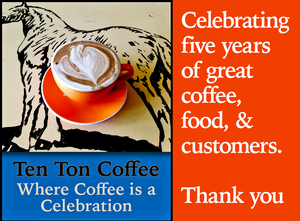
Davis said he was on the south side of the Dayton Inn, and Preas was on the north side, when he saw Lance Terry leaning on a white Ford Taurus, looking like he was in pain. Davis said he saw a car, and people running down the alley between the Dayton Historical Depot and Key Bank. A general search was conducted but didn't turn up anything, he said.
Davis said he went to Dayton General Hospital and talked to David Eaton who had been shot in the hand and knee. Eaton told Davis that Orozco and Delarosa were responsible. Davis said he went to the crime scene, looked for firearms, but found nothing. He said several people he interviewed identified Orozco and Delarosa as the perpetrators.
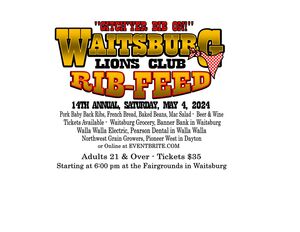
Cross Examination
On cross examination, Richards said Davis went to the hospital three times and talked with Eaton twice, and she said Eaton was "belligerent" with the staff. On the third visit, Sheriff LaTour was there, trying to get him to calm down, she said.
DAY TWO
The State called former Deputy H. Lee Brown to the stand.
Brown was asked to map all the businesses around the scene of the shooting as they were in 1996. He said he was familiar with the scene of the crime and that he was called at home with instructions to look for a small yellow car, but his search yielded nothing. Brown said he attended the July 10 autopsy of Lance Terry.

"There was a full metal jacket round tip of a bullet removed from his body," he said.
He said the Medical Examiner gave him the bullet, and it was sent to the Washington State Patrol Crime Lab for processing. Another unexpended bullet found at the crime scene was sent to the lab, he said.
Former Deputy Dale Preas was called to the stand.
Preas said he was on duty with Chief Deputy Don Davis on the evening of July 7, 1996. At 10:55 p.m. when they heard seven gunshots, and a lot of commotion.
It took him ten seconds to walk to the back of the Dayton Inn where he saw an individual going down the alley behind the Historical Depot. He said he also saw a set of headlights on a dark colored truck, which was backing up, aggressively.
He then got in his patrol car to talk to the driver of the truck, which exited the alley onto 2nd St, behind him. That's when he said he saw Lance Terry lying face down in the street and he notified the dispatch center to call for help.
"I noticed a tool of some sort in his left rear pocket," Preas said.
Preas described the tool as the type of tool used to repair chainsaws, which he said he removed from a pocket. When Deputy W. Dean Smith arrived on the scene Preas said he learned there was a second victim.
"I went around to the front of the Dayton Inn and saw David Eaton sitting on a bench," he said.
Eaton appeared to be "pretty shaken" and had bullet wounds to his hand and knee. Preas said Eaton told Sheriff LaTour that Orozco was the shooter and that David Delarosa was also there.
"We looked for Orozco and Delarosa and were not able to find them," he said.
A DVD video recording of evidence at the crime scene was played for the jurors and Preas testified to its accurate depiction. The video showed Lance Terry's white Ford Taurus on N. 2nd St. facing south toward the stoplight. There was one deformed bullet, and seven 380 caliber shell casings on the sidewalk, next to Key Bank. There was blood, and a bullet entry point on the front of an Oldsmobile parked next to Key Bank on the east side of N. 2nd St. There was also a hand print on the car, a beer can on the hood, and blood spots on the tires. There was a trail of blood leading to where Eaton sat on the bench in front of the Dayton Inn. The white Ford Taurus had a bullet hole through the rear tire.
Preas said all of the evidence was numbered and entered into evidence. The evidence also included a marijuana pipe, a baseball hat, two beer cans and the chainsaw repair tool.
Photos of the crime scene showed blood drops on the door jamb on the passenger side of the white Ford Taurus. Photos show blood on the right front corner of the Oldsmobile parked along the east side of Key Bank on N. 2nd St, and a blood stain on the curb in front of it where Lance Terry's body was.
Preas testified the Ford Taurus was in "park" when he arrived at the scene. No witnesses were identified at that time, he said. Preas said he inventoried the contents of the Ford Taurus, and no firearms were found inside.
The State called former Chief Deputy W. Dean Smith to the stand.
Smith said, as the Crime Scene Investigator, his duty was to secure the crime scene and have it diagrammed. Smith said the flag in the grille of the Oldsmobile was stuck there to show the trajectory of a bullet which went from the sidewalk out towards the street. He said no firearms were located.
PA Slack presented Smith with the original evidence bags with the shell casings in them. There were seven of them, and they were sent to the crime lab for fingerprinting, Smith said. Smith said they looked to be in the same condition as they were in 1996.
Smith said the beer can that had been placed on the hood of the Oldsmobile was sent to the Crime Lab for fingerprinting, as was a second beer can found in the alley behind Key Bank. The chainsaw repair tool found in Terry's pocket was also sent to the Crime Lab for processing, he said.
Cross examination
Defense Attorney Richards asked Smith if he had seen the crime lab report and he said he couldn't remember. She asked Smith why measurements of the evidence were taken from the buildings instead of from each other. He said this was done to simulate the scene for a baseline, but a report was never generated. He did not take measurements from Terry's body, he said.
David Eaton was called to testify.
Eaton was asked to describe the events of the night of July 7, 1996.
He said he and Terry had just gotten off work from their logging jobs at around 6 or 7 p.m., and they stopped at Terry's house to get his car and went to Eaton's house.
From there, they went to a friend's house and then headed to the PDQ. He said they were in the car, in the gas aisle, when they saw Jose Acevedo, who was also at the PDQ.
Eaton said while he and Acevedo were friends, "we gave each other a lot of crap, constantly". Eaton said Acevedo pulled him out of the car and they wrestled each other "to the ground."
"Someone yelled 'police,' so we dispersed," Eaton said.
He said they left the PDQ heading west when they heard a whistle, so they turned right onto N. 1st St, and right into the alley behind the Dayton Depot, and then back onto N. 2nd St. heading south. Eaton said David Delarosa was walking down the street and he approached the passenger side of their car, asking them several times if they are racists.
Eaton told him he was not, but Delarosa said they were. Eaton said he got out of the car, but then Terry told him to sit down and he pulled him back into the car. He said Terry jumped out of the car, ran around the rear of the car toward a car parked on the east side of Key Bank, and that's when Orozco shot Terry, at close range.
"He dropped like a sack of spuds," he said.
Eaton said Orozco turned the gun on him, shooting him in the knee and the hand. He said his head was toward the driver's side of the car when he heard two more shots, and footsteps running away.
Eaton said he staggered out of the car, leaning against it with his right hand, staggered over to the car and saw Terry on the ground. He said he made it to the front door of the Dayton Inn where he told his girlfriend's mother to call for help. Eaton testified there were no firearms in the Ford Taurus, or on Terry.
"I'll never forget his face," said Eaton who identified Orozco from a picture taken of him in 1996.
Cross examination
Attorney Richards asked Eaton if he recalled telling Sheriff LaTour he had used marijuana earlier in the day and Eaton said, "I may have."
She asked how much he had to drink that day and he replied, "A shot or two."
She also asked Eaton if he remembered telling Sheriff LaTour that "this was about drugs."
At this point the jury was removed, and the issue of drug use was debated by the attorneys. The jury was brought back and the questioning proceeded.
The State called Delores "Dee" Willis Thompson to the stand.
Thompson said she and her husband owned the Home Port Tavern on the corner of S. 2nd St. and Main Street, and they were working late that night. She said they left around 10 p.m. driving across Main St. onto N. 2nd St. and into the alley behind the Dayton Depot to look at a couch at the St. Vincent de Paul store. She said she heard what sounded like firecrackers. She said two men came running into the alley and the shorter of them smashed a beer can on their truck. She said that man ran toward the Depot and toward Commercial St.
"The tall one had a firearm in his hand and was running with it," she said.
She said he stopped and stared at her through the window of the truck. Her husband put the truck in reverse, and they backed up onto N. 2nd St., she said. That's when she said she saw David Eaton standing in the middle of the street, and another man lying in the street. She said she watched as Eaton headed toward the Dayton Inn.
The State called David Delarosa to the stand.
(Delarosa had been arrested and was returned to the U.S. from Mexico in 1998. He was offered an immunity agreement by Judge Scott Marinella in return for his testimony.)
Delarosa told the Court that he was good friends with Orozco in 1996, and that they were partying at a house on Clay Street on the evening of July 7. He said Orozco left the party to go to the store and didn't come back to the party, so he went to look for him. He said he found Orozco on Main St. at the corner of N. 2nd St. by Key Bank.
Orozco told him there had been a fight about racism at the store. Delarosa said when Orozco saw Terry and Eaton driving in their car on Main St. he called to them to stop.
Terry drove on by, but returned five minutes later, stopping on N. 2nd St. by Key Bank, and Delarosa said he walked up to the passenger side of the vehicle to talk to them about some racist remarks.
He said, "Lance said I knew better than that. Lance told me he was going to slap me around and kick me in the ass."
Delarosa said Eaton was sitting in the passenger seat when Terry got out and went to the rear of the car and tossed his shirt into the back seat. He said Orozco was standing on the corner, outside the bank, and he yelled at him to "see what Terry might have".
Delarosa said Terry approached with his hands raised, and they were empty. He said he saw Terry get shot four times, and he may have seen Eaton get shot.
"I started taking off running," Delarosa said.
As he was running toward the Dayton Depot, he said he saw a truck in the alley and he threw his beer can at it. He then ran to Washington Street, and to the Touchet River, and then he hitched a ride to Waitsburg.
He and Orozco stayed in the same house in Walla Walla, before leaving for the Tri Cities, and then to Mexico, he said. Delarosa said he and Orozco never discussed the incident, but he said he overheard Orozco talking about it on the phone.
Cross examination
Attorney Richards asked Delarosa if he and Orozco had made a plan to shoot Terry and Eaton, and he answered "no."
DAY THREE
The State called Christopher Darby to the stand.
In July 1997, Darby was an Emergency Medical Technician in Dayton. Darby said he arrived at the scene of the shooting, where he saw one victim on a bench in front of the Dayton Inn and another victim lying between two vehicles with his head on the sidewalk.
Darby said the second victim was noted to have gunshot wounds in the mid sternum area and just off the abdomen and there was an exit wound on the victim's left flank. He said they transported the victim, who was semi-responsive and semi-combative, to Dayton General Hospital.
The State called Kathleen Casseday ARNP to the stand.
Casseday said she was working in the Dayton General Hospital Emergency room when Terry arrived at the hospital.
"Our attention was on Lance Terry, at that time," she said.
She said upon Eaton's arrival to the hospital, Eaton was placed in a room adjacent to Terry and treated him for gunshot wounds to the right hand and right knee. Casseday said that patients are often combative for various reasons including pain.
The State called Columbia County Civil Deputy Tim Quigg to the stand.
Quigg said he received a set of fingerprints, in 2016, that were matched to prints in a database and they were determined to be Orozco's.
The State called Riley Post to the stand.
Post said she and Eaton were living together at the time of the shooting. Post said after work that evening, Eaton and Terry went to a friend's house. She said she was annoyed at Eaton.
"He was up there drinking and I wanted him home for dinner," she said.
Post said Eaton and Terry came home sometime after 9 p.m., but they left again at around 9:50 p. m.
After they left, she said she heard what sounded like firecrackers, and then she received a phone call about the shooting. Post said she went to the hospital, and that Terry was air lifted to Walla Walla St. Mary's Hospital.
The State called Forensic Scientist James Luthy to the stand.
Luthy is a Latent Prints Examiner for the Washington State Patrol Crime Lab in Olympia. He said his job is to assist local sheriff's offices with classification and comparison of fingerprints. After the 1996 shooting, Luthy was asked to examine the evidence found at the scene of the crime, which included a brass pipe, seven 380 cartridge cases, and two empty beer cans. He said there were no finger print impressions on any of them.
The State called Medical Doctor Daniel Selove, to the stand.
Selove is a Medical Examiner of Forensic Pathology.
"Is it fair to call you an M.D. of the Cause of Death?" asked PA Slack.
"Yes," he replied.
Selove said he talked about the case with the county coroner, a couple of the deputies, and one of the medical doctors, to learn about the circumstances and medical interventions surrounding the case. He performed an autopsy on Terry, on July 10, and he made a report on July 18, he testified.
Selove said Terry was shot two times. Bullet "A" struck Terry at the lower left side of his chest, and was a "through and through" wound. Selove said Terry was never in any danger from it.
Bullet "B" struck Terry below the breast bone. Selove said Bullet "B" passed through the liver and into the body's major blood vessel, the aorta, and through one of the vertebrae severing his spine. He said the bullet lost its energy and did not exit the body.
Selove said Bullet "B" caused Terry's death from the complications of internal bleeding. The bullet was removed by him, and turned over to the Columbia County Sheriff's Office, he said.
Cross examination
Attorney Richards asked Selove to explain the term 'stippling' which was mentioned in his autopsy report. Selove said stippling is pricking and darkening of the skin around a gunshot wound, from a gun that is fired from one or two inches away, up to two to three feet away. Richards asked Selove if he saw stippling in Terry's case.
"I saw none," he said.
The State called FBI Special Agent Michael Dreher to the stand.
Dreher said, in 2016, he was working out of the U.S. Consulate in Guadalajara Mexico, when case agents asked him to help find Orozco. He said he was able to find Orozco's family members.
He said Orozco's brother, Juan, died in 1998, but his driver's license was activated in 2015. He followed up on that lead, which led to the arrest of Orozco on Mar. 31, 2016, in the State of Guanajuato.
Dreher testified that, as a child born in the U.S. to Mexican citizens, Orozco could simply have applied for Mexican citizenship.
The State called Washington State Patrol Crime Lab Forensic Scientist Brett Bromberg-Martin to the stand.
Martin said he used microscope comparison analysis of the two bullets and the shell cartridges, to determine that all of them were fired at the same time, probably from a semiautomatic handgun. He said he had sealed the evidence, placed it in the crime lab evidence vault, and they were shipped back to the Columbia County Sheriff's Office.
The Defense called Norbert "Joey" Cush to the stand.
Cush testified that he was at the PDQ on the night of July 7, 1996.
"There was an altercation. I saw it," he said.
He said Jose Acevedo, Delarosa, Terry, Eaton, and Orozco were there, too.
"I heard a lot of cussing and screaming at each other," Cush said. "It didn't feel right."
Cush said after Terry, Eaton, Delarosa and Orozco left, he told a friend, "I don't think this is over, by any means."
Fifteen to twenty minutes later Cush said he heard shots fired on the west side of town. He said he ran toward the Dayton Inn and saw Eaton around the corner, moving in front of a car, holding his hand, saying, "They killed him. They shot him."
"He was half way to the bumper at the front of the car. I met him at the curb and walked him to the bench," Cush said.
The Defense called Civil Deputy Tim Quigg to the witness stand.
Quigg said he remembers attorneys recently looking at the two boxes of evidence from the 1996 incident.
Cross examination
Richards asked Quigg if Terry's white Ford Taurus was ever logged into evidence, and he said he didn't think so.
"The car and its contents are not in evidence," he said.
Richards asked if it was standard practice, in the case of a homicide, to place everything that might be useful into evidence.
Quigg said, "Yes, with a search warrant."
PA Slack asked Quigg if he remembered from his reading, if any vehicle was impounded or inventoried, including a 1995 blue Ford Explorer and an Oldsmobile.
Quigg replied," I don't see any vehicle entered into evidence."
Quigg said if evidence directly relates to a crime it would be entered into evidence, and that was the standard practice, in 1996, and now.
Richards asked why the Taurus wasn't logged into evidence.
"It had blood on it, and it was involved in a shooting," she said.
Richards pointed out that a baseball hat had been logged into evidence.
DAY FOUR
The Defense called Benjamin Orozco to the stand.
Orozco said he lived in Dayton from the time he was born until 1991 when his family moved to Walla Walla, but he worked a couple of summers in Dayton at the Green Giant food processing plant.
In 1996, Orozco said he was a freshman in high school and Lance Terry was a senior and that their paths crossed infrequently.
On the evening of July 7, 1996, Orozco said he came to Dayton and "messed around" with some of his friends during the day. He said he later left a friend's house, with three people, to get some beer at the PDQ.
A big crowd of people and a group of cars were at the PDQ, adjacent to Main Street, he said.
Orozco said he stayed by the car while his friend went in for the beer. He said he heard Lance Terry say, "You Beaners know better than to f_____ with us. Benji knows better than to f___ with us."
Orozco said he told his friends to get in the car. He said they waited for the driver to get back and then they left, to drop one of them off at home.
"I decided to see what happened and went to Jose Acevedo's house," he testified.
He said he was heading down Main Street when he saw Delarosa at the corner of Key Bank and 2nd St. Orozco said a car pulled up almost to the stoplight and Delarosa approached the car on the passenger side. He said Delarosa turned to look at him. At that point the car backed up quickly, he said.
He said he didn't know the occupants until the car stopped. But Terry got out on the driver's side and came around to the rear of the car, and Eaton "jumped" out of the car, he said. Orozco said Terry pointed a gun at him and then handed it to Eaton.
"First I froze," he said. "I didn't think much about it. I was in shock at first."
He said he screamed to Delarosa, "We're screwed!"
Orozco said Terry charged him, and so he pulled out his gun and started shooting, as he was backing up on the sidewalk. He said Terry jumped all the way onto the sidewalk, and then he saw him grab his chest.
"I ran down to the alley. There was a truck coming out of it, and it bumped into me. I ran around the truck," Orozco said.
He said Delarosa threw a beer can at the truck. Orozco ran toward the parking lot of the former Elk Drug because he thought the occupants of the truck might have been with Eaton and Terry.
"I was running for my life," he testified.
Orozco said he met up with Delarosa a day later and learned the next day that Terry had died. He said the two of them went to the Tri-Cities. Richards asked why he didn't talk to the law enforcement officers about it.
"I was scared to get shot by the police in Columbia County," he said. "I thought the police would shoot before I could talk."
He said he thought at first to go to Idaho, but decided on Mexico instead. It was easy for him to get his deceased brother's birth certificate, he said.
"I got the quickest one I could get," Orosco said.
Richards asked him to talk about the treatment he received as a migrant worker in Dayton. He said when the migrants left after the harvest some people got mad at his family because of what the migrants did.
"We weren't the same. We lived here," he said.
Orozco said he experienced that kind of treatment almost every year.
The State and Defense rested their cases.
Judge Wolfram instructed the jury, asking them to consider all the relevant facts in the case, and outlined the conditions for a charge of murder in the 2nd Degree, assault in the 1st degree, and unlawful Possession of a Firearm. He also discussed what constitutes Reasonable Doubt.
Closing statements
PA Slack told the jurors there was no doubt as to Orozco's guilt. He said the State has met its Burden of Proof in the charge of 2nd degree murder of Lance Terry.
"There is no disputing the fact that Terry was shot on July 7, 1996 with the intent to cause his death and that he died in Columbia County and that it was unjustified," Slack said.
The State has met its Burden of Proof in the charge of 1st degree sssault of David Eaton because Orozco assaulted Eaton with a firearm with the intent to inflict bodily harm and it took place in Columbia County, and was unjustified, he said.
With regard to the unlawful possession of a firearm charge, Slack said Orozco had been convicted of a felony in Columbia County, Washington and could not legally possess a firearm.
"There is overwhelming evidence. It fits together like a puzzle," said Slack who went through the evidence as presented by the State in prior testimony.
Slack said the investigation was thorough and all the evidence, including the bullet that killed Terry had been collected. He also said the evidence doesn't support the two-gun theory posed by the defense counsel. Slack said Orozco wasn't afraid of anything because he calmly placed his beer can down on the hood of the Oldsmobile before shooting Terry and Eaton.
"He was going to ambush Terry from behind the Ford Explorer. He was hunting Lance Terry and David Eaton," Slack said.
"Orozco pulled the trigger four times. Then he pointed the gun at Eaton, in the car, and shot him three times," he told the jurors.
Slack said "Dee" Willis testified that Orozco looked at her calmly as she was sitting in her truck in the alley. They fled because they knew they were guilty and wanted to flee justice, he said.
"You can see almost every step of what I've told you. We have proved the case," Slack said."Consider the evidence as a whole and believe the story because of the evidence."
Attorney Jane Richards disagreed with the State's statements, saying the State was only providing a theory of the sequence of events.
"Don't look at is as a whole," she cautioned the jurors.
Richards told the jurors the State didn't prove anything. They "cherry picked" through the evidence. Richards said the credibility of witnesses is important and that facts are more important than arguments.
Joey Cush testified there were a lot of people streaming out of the Dayton Inn and Richards asked the jurors to ask themselves why those people were never interviewed. She said none of the testimony addressed the sequence of the shooting, including who was shot first. Also, if, and when Orozco was hiding behind the Ford Explorer was never proven.
"There is no evidence of an ambush. That's argument, not evidence," she said. "They're lying to spin the evidence, for you."
"The State is long on theory and short on evidence," she said.
What is known, is that Kiley Post said Eaton and Terry had been drinking. There was a fight at the PDQ, and Terry called out, "Benji knows better than to mess with me."
Orozco was at the PDQ just to get beer, she said. There was a bottle of liquor in Terry's car. It was dark outside. Terry and Eaton stopped at the stoplight on N. 2nd St. and Delarosa was talking to them. Orozco was not in the road. Orozco was on the sidewalk when Terry backed up in the car, Richards said.
Richards told the jurors that Terry and Eaton got out of the car in the middle of the road and that Terry handed "something" to Eaton. She said Orozco was standing on the sidewalk east of Key Bank when Terry came charging at him, and that he didn't know what to think.
"I froze," he said.
Richards said the State's theory that Orozco crouched down and was lying in wait isn't supported by the location of the shell casings and that there was no order to their disbursement. She said the shell casing patterns indicate the bullets were going in the direction of Orozco, instead of out into the street. She noted that the gun Eaton had is missing.
Richards said the State was trying to infer intent, but a person is entitled to act on appearance of danger. Richards said Orozco thought the truck backing up in the alley was connected to Eaton and Terry and he was simply fleeing for his life that night.
Some of the evidence is missing off the inventory list and Richards asked why a baseball hat is on that list, but the Ford Taurus isn't, when it had blood on it, and bullet holes in the tires.
"I'm looking for the obvious. Why couldn't the car be important?" Richards asked. "They made a huge mistake not preserving that car or canvassing the witnesses."
She said, in 1996, Orozco was only 21 years old and didn't believe he could get a fair trial, even if he the life he took was in self-defense.
"We know they will shoot just for reaching into pockets," Richards said about law enforcement officers.
Richards asked the jurors to decide whether the charge of homicide is justifiable or reasonable. She asked them to look at the totality of the circumstances.
"Can he get a fair trial in 2019?" she asked the jurors.
Deliberations
The jury began their deliberations at about 3 p.m. on Friday, and it took them just a little over an hour to return verdicts of guilty on all three charges.
What's next?
The Department of Corrections will perform a pre-sentencing investigation and a report will be generated in the next two to three weeks, after which, a date for sentencing will be set.
Following the proceedings, the Orozco family was invited to comment, but declined.



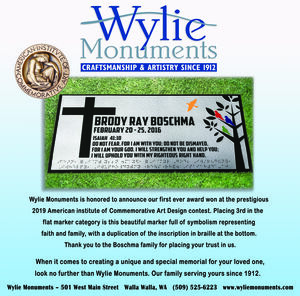
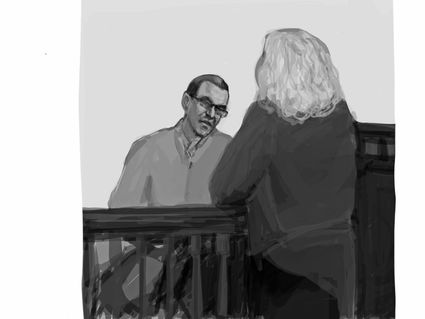
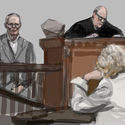
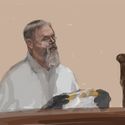
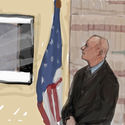
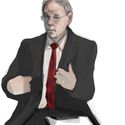
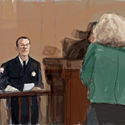
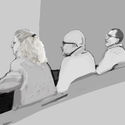
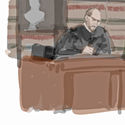
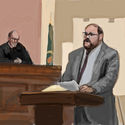
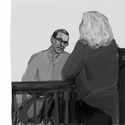
Reader Comments(0)